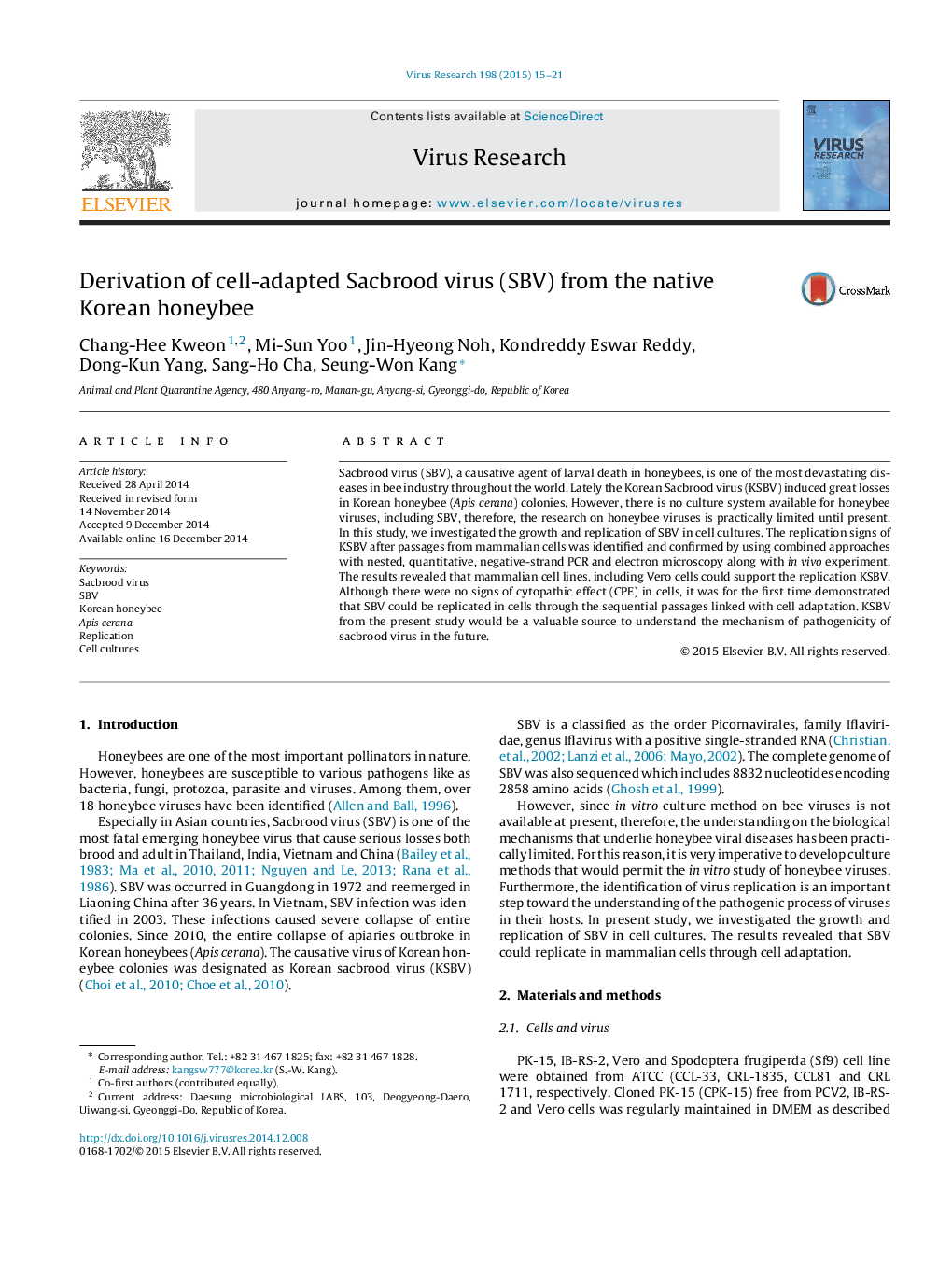| Article ID | Journal | Published Year | Pages | File Type |
|---|---|---|---|---|
| 3428322 | Virus Research | 2015 | 7 Pages |
•Sacbrood virus (SBV), a causative agent of larval death in honeybees.•We investigated the growth and replication of SBV in cell cultures.•SBV showed replication signals in mammalian cell lines, including Vero cells, without any signs of cytopathic effects.•SBV can replicate in mammalian cells with sequential passaging after cell adaptation.
Sacbrood virus (SBV), a causative agent of larval death in honeybees, is one of the most devastating diseases in bee industry throughout the world. Lately the Korean Sacbrood virus (KSBV) induced great losses in Korean honeybee (Apis cerana) colonies. However, there is no culture system available for honeybee viruses, including SBV, therefore, the research on honeybee viruses is practically limited until present. In this study, we investigated the growth and replication of SBV in cell cultures. The replication signs of KSBV after passages from mammalian cells was identified and confirmed by using combined approaches with nested, quantitative, negative-strand PCR and electron microscopy along with in vivo experiment. The results revealed that mammalian cell lines, including Vero cells could support the replication KSBV. Although there were no signs of cytopathic effect (CPE) in cells, it was for the first time demonstrated that SBV could be replicated in cells through the sequential passages linked with cell adaptation. KSBV from the present study would be a valuable source to understand the mechanism of pathogenicity of sacbrood virus in the future.
